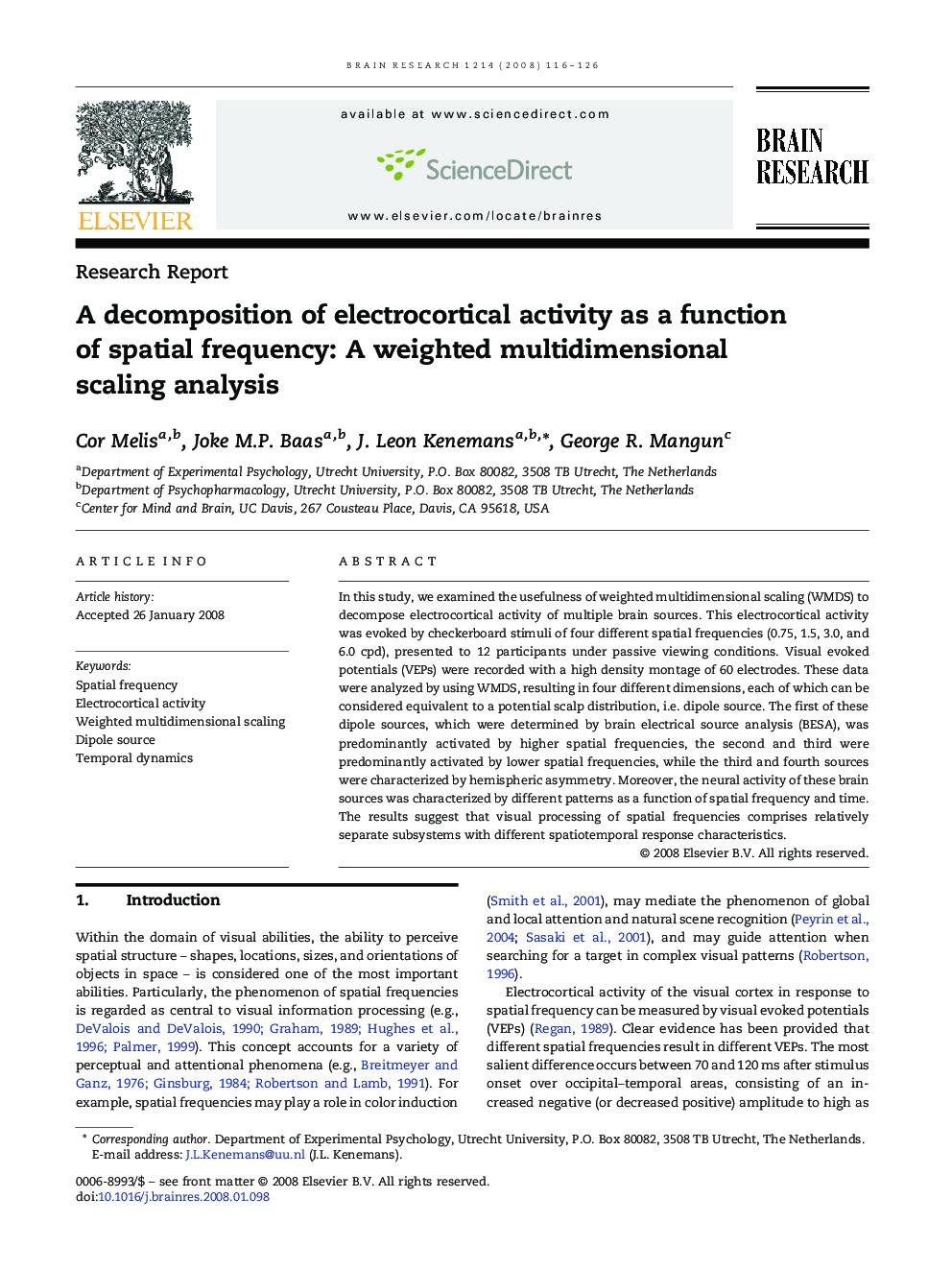| Article ID | Journal | Published Year | Pages | File Type |
|---|---|---|---|---|
| 4329540 | Brain Research | 2008 | 11 Pages |
In this study, we examined the usefulness of weighted multidimensional scaling (WMDS) to decompose electrocortical activity of multiple brain sources. This electrocortical activity was evoked by checkerboard stimuli of four different spatial frequencies (0.75, 1.5, 3.0, and 6.0 cpd), presented to 12 participants under passive viewing conditions. Visual evoked potentials (VEPs) were recorded with a high density montage of 60 electrodes. These data were analyzed by using WMDS, resulting in four different dimensions, each of which can be considered equivalent to a potential scalp distribution, i.e. dipole source. The first of these dipole sources, which were determined by brain electrical source analysis (BESA), was predominantly activated by higher spatial frequencies, the second and third were predominantly activated by lower spatial frequencies, while the third and fourth sources were characterized by hemispheric asymmetry. Moreover, the neural activity of these brain sources was characterized by different patterns as a function of spatial frequency and time. The results suggest that visual processing of spatial frequencies comprises relatively separate subsystems with different spatiotemporal response characteristics.
